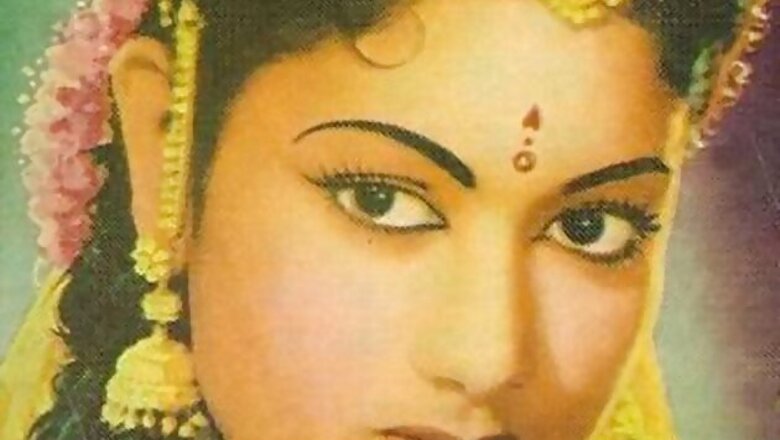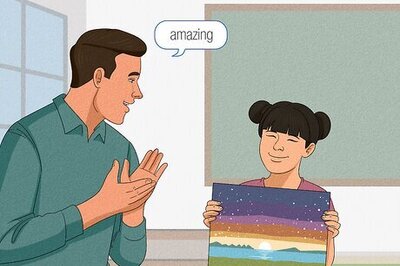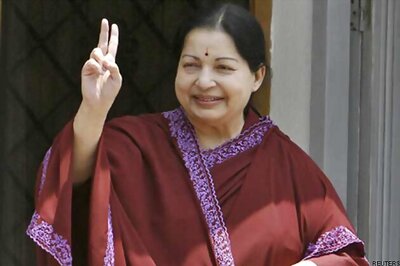
views
New Delhi: The Indian film industry has seen the emergence of some critically and commercially appreciated female directors in last some years but the film business more or less remains dominated by their male counterparts. However, the scenario is bound to change as the indomitable spirit of female members of the film world is taking 'meaningful' strides in every direction.
Today, there are women who are well versed with the technique of filmmaking but there was a time when they were not imagined as something more than an actress, but then 'there is always a hero, in real life or in fiction,' in this case a heroine. Fatma Begum is widely considered as the first female film director of India, however this much is not sufficient as her introduction.
Born in an Urdu speaking family, Fatma Begum was related to Nawab Sidi Ibrahim Muhammad Yakut Khan III. She was the mother of Zubeida, Sultana and Shehzadi, who were popular actors of the silent era. She started working in films in 1922 after getting trained in plays. Fatma worked with filmmakers like Ardeshir Irani and Nanubhai Desai before founding her own production company Fatma Films which was later rechristened as Victoria-Fatma Films. 'Bulbule Paristan' that released in 1926, became the first Indian film to be directed by a female director. However, acting remained on her wish list and she continued to act till late 1930s.
Kommareddy Savitri (1935-81) honed her skills as a child artist in the Madras Presidency but she started fetching attraction after her association with NTR's theatre company. Later, Savitri started her own company Navabharata Natya Mandali.
Becoming a film heroine didn't come easily to her as she had to wait patiently before getting a good role. Savitri couldn't act in 'Agni Pariksha' (1949) despite being offered a role because she was just a 12-year-old teen then. She couldn't get anything better than a second lead role in LV Prasad's 'Pelli Chesi Choodu' (1952). But, here onwards she never looked back and acted in a number of Telugu, Tamil, Kannada and Hindi films.
She got married to one of the stalwarts of the Southern Cinema, Gemini Ganesan but kept it secret till she signed a commercial deal as 'Savitri Ganesan'. She gave several hit films with Gemini Ganesan as an actress but her directorial career took off with films such as 'Chinnari Papalu', 'Chiranjeevi' and 'Maathru Devatha' during 1968-69. She died at 46, but before that she had given female directors a launch pad to thrive on in three major South Indian languages.
Paluvayi Bhanumathi Ramakrishna (1925-2005) contributed in every department of filmmaking before making her presence felt behind the camera in Telugu and Tamil. Bhanumathi was associated with more than 200 films in her career but wielding the megaphone came her way in 1953 when she directed a tri-lingual film 'Chandirani' in Telugu, Tamil and Hindi. She continued to direct films till 1993 (Asathyaralu), and her prolific direction career was acknowledged when she received the Nandi Award in 1986. Bhanumathi emerged as an important filmmaker because of her aesthetic sense as she never got into double minds about experimentation. Many of her contemporaries praised Bhanumathi for her brave portrayal of female sexuality.
Arundhati Debi's (1925-90) personal life is no lesser than a celluloid drama. Though she was trained at Rabindranath Tagore's Vishwa Bharati University and had her roots in a family famous for cultural patronage but taking a leap of faith in acting was never easy in the conventional society of the East Bengal. Debi faced the camera for the first time in 1952 (Yatrik), and here onwards began a journey which culminated with her demise in 1990. Direction didn't come very late for her as she directed her first film after 15 years of starting her acting career with 'Chhuti' in 1967, she was 42 then. She went on to direct films such as 'Megh-O-Roudra', 'Padi Pishir Barmi Baksha', 'Deepar Prem' and 'Gokul'. Some film historians perceive Arundhati Debi as a lady who inspired a traditional society to break the shackles.
Prema Karanth (1936-2007) was the wife of the legendary New Wave dramatist and filmmaker BV Karanth but this was her secondary introduction as she herself was a known theatre personality. Her independent works had takers in almost every strata of the society because she started with staging children's plays and gradually moved on to other fields of mass communication. The National School of Drama played an important part in her life as this was the place where her ideas about the society and its immediate needs concreted. She directed her first film 'Phaniyamma' in 1983, and it is considered as the first Kannada film by a female director. 'Bandh Jharoke' (1997) was her last film as director but between 1983 and 1997, Prema instructed the actors in 'Sapne Huye Sakaar', 'Nakkala Rajkumari', 'Appiko' and 'The Jewel of Manipur 1 and 2' in both Kannada and Hindi. Her influence on Kannada filmmaking can be understood by analysing the rise of women characters on screen in last 25 years.
Like most of the female directors of 1950s and 60s, Vijaya Nirmala also started as a child artist and acted in more than 200 Telugu, Tamil and Malayalam films. Nirmala was just 11 when she was featured in 'Panduranga Mahatmyam' (1957) but her life changed after the hugely acclaimed 'Bhargavi Nilayam' (1964), in which she starred opposite Prem Nazir. Nirmala directed two films 'Meena' and 'Kavitha' in 1973. Nirmala's direction career is difficult to match for anyone as the Guinness Book of Records registers her as the female director who has made the highest number of films.
Sai Paranjpye's family's cultural history contributed a lot in her evolution as a filmmaker and when it happened it happened for good. 'Jadu Ka Sankh' (1974) set her for a long journey in filmmaking which Panajpye used to the optimum. 'Sparsh', 'Katha', 'Chashme Buddoor', 'Saaz', all her films showcased distinct themes in an easy way. Sai is not very active now but other filmmakers are using her films as a source of inspiration. David Dhawan's 'Chashme Baddoor' (a remake of Paranjpye's film) is all set to hit the screens.
Aparna Sen's stature as a film actress was so big that she had to come to direction sooner or later and it had to be a different film, thankfully she didn't disappoint her fans. '36 Chowringhee Lane' (1981) marked her foray into direction, it was subtle, emotionally charged and heavy in its outcome. The film was made in English but it connected with everyone with all its loneliness and subtlety and gave a new dimension to the idea of English filmmaking in India. Aparna Sen has dedicated her life to socially relevant cinema and is continuously exploring the visual medium. After 'Iti Mrinalini', she is gearing up for 'Goynar Baksho', in which she is once again directing her talented daughter Konkona Sen Sharma.
Mira Nair and Deepa Mehta are leaving their impression on the world cinema map while Kalpna Lajmi, Vijaya Mehta, Revathy, Suhasini Maniratnam and Tanuja Chandra have also done their part to pave the way for more women filmmakers in India.
With more serious women filmmakers like Meghna Gulzar, Leena Yadav, Zoya Akhtar, Reema Kagti, Kiran Rao, Farah Khan, Rajshree and Anusha Rizvi coming into the frame, the future of female directors in Indian cinema seems to be touching a new high soon.####


















Comments
0 comment